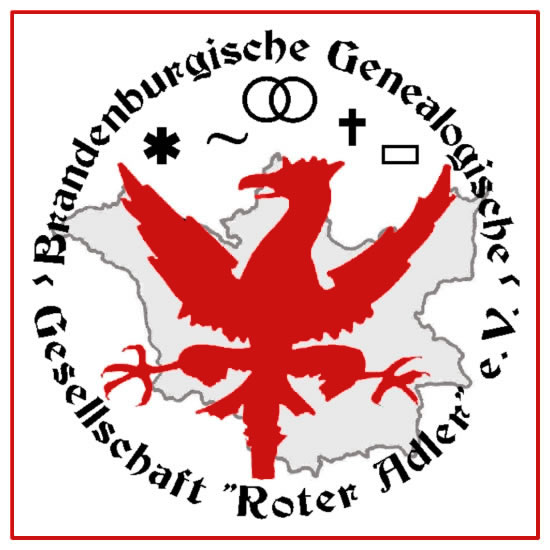Die Territorialentwicklung der Mark Brandenburg
In order to understand the affiliation of certain areas to the Mark Brandenburg, it is essential to present the historical connections of acquisitions and losses.
The most significant overlaps with neighbouring research areas are in the area of the border with Pomerania, Lusatia and the Altmark. The final scope of our research area was created as a result of the Congress of Vienna in 1815 with the new provincial division of Prussia in 1816.
In the process, the northern parts of the Neumark fell to the province of Pomerania and the Altmark to the province of Saxony. Lower Lusatia, on the other hand, with the exception of the already Brandenburg dominion of Kottbus, fell from Saxony to Brandenburg.
The birth of the Mark Brandenburg is considered to be 11 June 1157, the day on which Albrecht der Bär from the dynasty of the Ascanians of Anhalt succeeded in reconquering Brennaburg Castle from the Slavs once and for all time. The prince, who until then had called himself Margrave of Salzwedel (Altmark), now took the title of his conquered imperial fief and henceforth called himself Margrave of Brandenburg.
Parts of today’s Mark had already belonged to his fief, such as the Prignitz, the Zauche and the Havelland since 1136. He enfeoffed the new county of Ruppin to the Count of Arnstein as early as 1134.
The following table shows the territorial changes since 1157:
| Year | Event |
| 1157 | Albrecht der Bär acquires the Teltow. |
| 1225 | Johann I and Otto III buy the Barnim. |
| 1250 | They buy the land of Lebus, which comprised the districts of Lebus, Oststernberg and Weststernberg, from the Polish duke Boleslaw. |
| 1257 | They conquered the western Neumark. |
| 1260 | Konrad, Johann I’s son, receives the eastern Neumark as a dowry for his wife, a Polish prince’s daughter. |
| 1356 | The Mark becomes an electorate and is briefly called the Kurmark. It covers 21,430 km2. |
| 1415 | After the extinction of the Ascanians and changing allegiance to the houses of Luxembourg and Wittelsbach, the Burgrave of Nuremberg from the House of Hohenzollern is enfeoffed with the Mark. |
| 1445 | Friedrich II buys the dominion of Kottbus. |
| 1462 | In the Treaty of Guben he acquires the dominions of Teupitz and Wusterhausen. The Mark covers 21,430 km2. |
| 1482 | Albrecht Achilles acquires the territories of Krossen, Bobersberg, Züllichau and Sommerfeld in the treaty of Kamenz. The Mark covers 33,862 km2. |
| 1490 | Johann Cicero buys the dominion of Zossen. |
| 1524 | Joachim I collects the dominion of Ruppin as a settled fief. |
| 1535-1571 | The Mark is divided into the Kurmark under Joachim II and the Neumark (Neumark in the narrower sense + Sternberg, Züllichau, Krossen and Kottbus) under Johann von Küstrin. |
| 1555 | Johann von Küstrin buys the dominions of Beeskow and Storkow. |
| 1648 | Der Große Kurfürst receives the lordship of Luckenwalde and the monastery land of Zinna. |
| 1686 | He receives the dominion of Schwiebus from Austria in return for war assistance, although it does not finally fall to Prussia until 1742 and remains with Silesia until 1816. |
| 1687 | He exchanges Jüterbog and Dahme for Querfurt. |
| 1701 | The Mark becomes part of the Kingdom of Prussia. |
| 1815 | Lower Lusatia, which had once belonged to the Mark, falls to Prussia along with the dominions of Baruth and Sonnewalde and is annexed to Brandenburg, while the Altmark becomes part of the province of Saxony. Our province thus takes on its present form. |
Sources:
Beuermann/Heinze: Die Provinz Brandenburg, 1900 (Daten)
Putzgers Historischer Schulatlas, Velhagen & Klasing 1923 (Karten)
